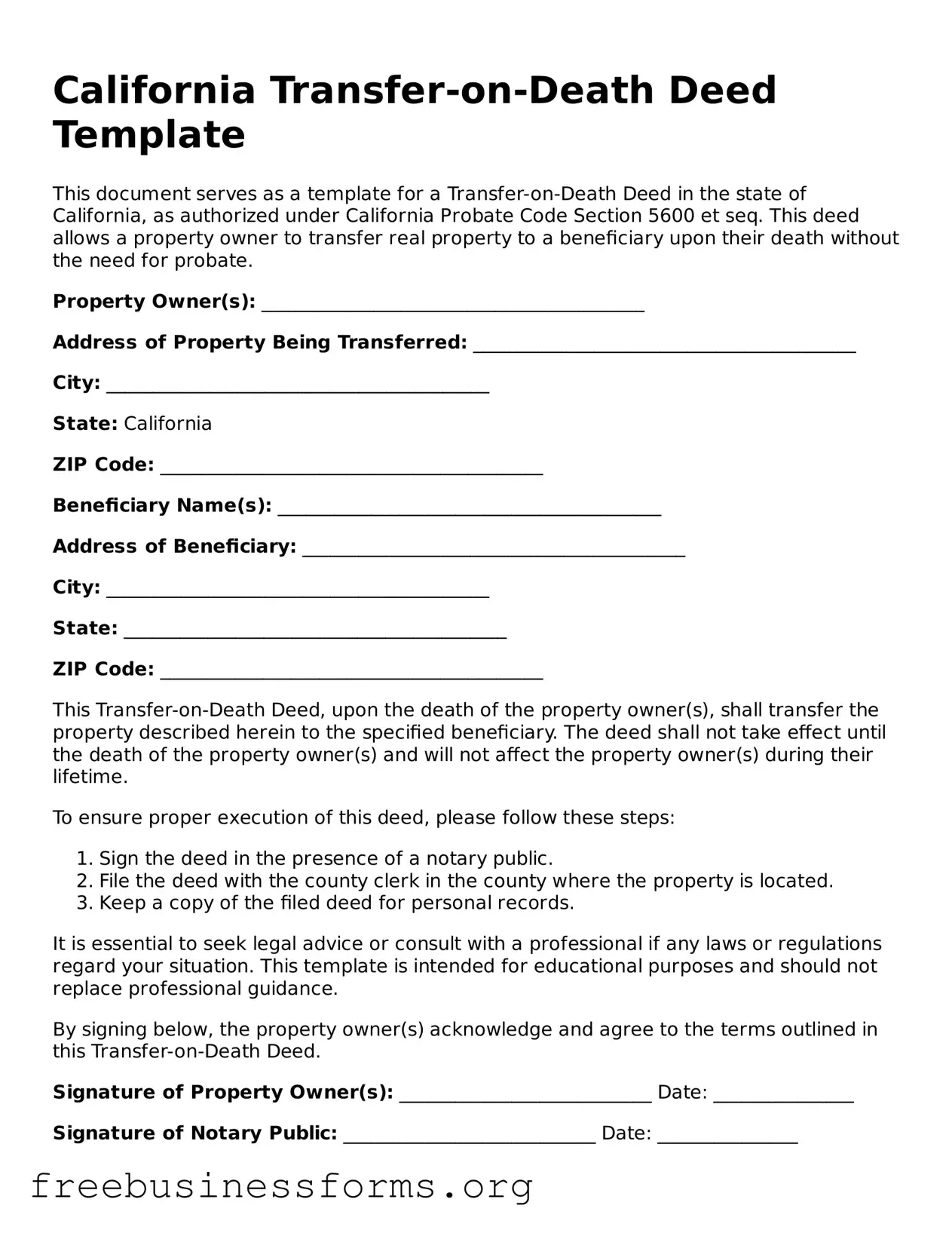California Transfer-on-Death Deed Template
This document serves as a template for a Transfer-on-Death Deed in the state of California, as authorized under California Probate Code Section 5600 et seq. This deed allows a property owner to transfer real property to a beneficiary upon their death without the need for probate.
Property Owner(s): _________________________________________
Address of Property Being Transferred: _________________________________________
City: _________________________________________
State: California
ZIP Code: _________________________________________
Beneficiary Name(s): _________________________________________
Address of Beneficiary: _________________________________________
City: _________________________________________
State: _________________________________________
ZIP Code: _________________________________________
This Transfer-on-Death Deed, upon the death of the property owner(s), shall transfer the property described herein to the specified beneficiary. The deed shall not take effect until the death of the property owner(s) and will not affect the property owner(s) during their lifetime.
To ensure proper execution of this deed, please follow these steps:
- Sign the deed in the presence of a notary public.
- File the deed with the county clerk in the county where the property is located.
- Keep a copy of the filed deed for personal records.
It is essential to seek legal advice or consult with a professional if any laws or regulations regard your situation. This template is intended for educational purposes and should not replace professional guidance.
By signing below, the property owner(s) acknowledge and agree to the terms outlined in this Transfer-on-Death Deed.
Signature of Property Owner(s): ___________________________ Date: _______________
Signature of Notary Public: ___________________________ Date: _______________
